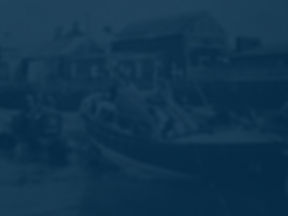
The GourdonLifeboats & Fleet
Call Out: The History of the Gourdon Lifeboats (RNLI)
The Gourdon lifeboat station opened in 1878 and closed in 1969 after 91 years of service to the “Wild and Rocky Coast” of Kincardineshire. The Kincardineshire coastline is now serviced by the RNLI lifeboats from Montrose and Aberdeen.
The Young George Irlam (1878-1892)
Coxswain: James Moir
Coxswain: David Lownie
Theopilus Sidney Echalaz (1892-1915)
Coxswain: John Ritchie
Coxswain: Alexander Anderson
Coxswain: James Moir
Coxswain: John Cargill
Moss (1915-1936)
Coxswain: Charles Moir
Coxswain: George Milne
Margaret Dawson (1936-1952)
Coxswain: George Milne
Coxswain: William Cargill
Coxswain: John G. Souter
Edith Clawson Thue (1952-1969)
Coxswain: John G. Souter
Coxswain: James Dorward
Coxswain: Roy Souter
Notes
-
The Young George Irlam saw the shortest period of service
-
The inshore surf boat Maggie Law saw service from 1890–1930 and saved 36 lives. She was built by James (Jeems) Mowatt, commissioned and maintained by the fishermen of Gourdon.
-
The Theophilus Sidney Echalez had the longest period of service on station, and had the highest number of rescues.

Photograph of the Edith Clawson Thue, courtesy of Angie Robertson, Arbroath.
The Fowler Challenger III tractor being used to launch her is RNLI Fleet number T66, registration number XXP400 - thanks to retired lifeboat crew member Tim Kirton for additional information.
The Gourdon Fleet
From the boat stamps of the Gourdon Fishermen's Association Ltd.
-
Viking ME 14
-
Mascot A 440
-
Reaper ME 46
-
Stella B ME 78
-
Liberty ME 208
-
Trustful ME 132
-
Carol Anne ME 50
-
Silver Fern ME 92
-
Day Dawn ME 101
-
Marguerita ME 40
-
Enterprise ME 155
-
Angus Rose ME 41
-
Silver Quest ME 150
-
White Wing ME 113
-
Sweet Promise A206
-
Crissie Criggie ME 13
-
Star of Bethlehem ME 10
-
Geallachd Milis (Gaelic for Sweet Promise) A 206
“I mind fine, when you could walk across the harbour on the decks of the boats.”
The Coastguard Service
The Coastguard Service co-ordinates marine search and rescue operations around the 4,500 mile UK coastline and for 1,000 miles into the Atlantic.
Modern technology has meant that instead of spending long hours keeping watch in remote lookouts, regular Coastguard Officers now direct operations from specially equipped search and rescue centres situated at carefully-chosen sites around the coast.
This is certainly a far cry from the original Coastguard service set up in 1822 to crack down on smuggling. In those days fishing boats would come into harbour with brandy casks slung under their keels. Ships were found with false bows or false bottoms. Tobacco was even woven into hawsers.
Saving life was only a small part of the Coastguard's job compared with saving money for the Revenue. At the same time the early Coastguards were expected to assist ships in distress and, in case of shipwreck, to do their best to save lives. It was not uncommon for passengers and crews to drown scarcely a stone's throw from the shore. In severe storms there was often little anyone on land could do to reach a stranded ship.
A dramatic break-through came when George Manby, a lifelong friend of Horatio Nelson, perfected a mortar which would fire a shot with 500 yards of line from the shore on to a wrecked ship.
Over the next fifty years other types of rockets were developed, the most famous being the Boxer rocket - a highly reliable double charge rocket which became standard lifesaving equipment in 1865 and remained so until after World War 2.
This building which now houses the Maggie Law Maritime Museum was purpose built by the Coastguard and Auxiliary Coastguards for the storage of life saving apparatus .
The responsibility of the local Montrose and Aberdeen Coastguard services may be:
• Rescuing of persons close inshore and in tidal waters,
• Assisting with persons threatening to jump from bridges,
• Searching for missing persons, ordinance, chemicals, etc reported by members of the public (All terrain types),
• Dealing with any of the above once found (i.e. rendering first aid, cordon off area, etc.),
• Guiding other rescue resources onto a casualty's position (i.e. burning vessel offshore,)
• Manning of helicopter landing site at Aberdeen Royal Infirmary for medical emergencies,
• Setting up and manning of helicopter emergency landing sites,
• Advising the public on dangers they may come across on or near the coast,
• Providing communications links for other services,
• Assisting other services to complete their task (Ambulance/Police).
Dedication
This page is dedicated to the invaluable heritage contribution made by Roy Souter, who meticulously transcribed and preserved the records of the Gourdon Lifeboats for the book “Call Out” which is a complete and detailed account of the service records of the Gourdon Lifeboats from 1878 – 1969. For further information and details on ordering, please see our Merchandise page.
